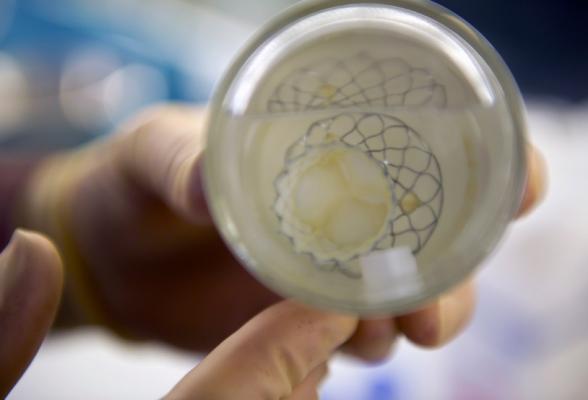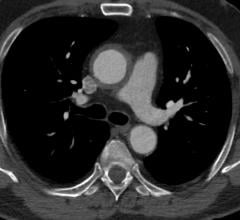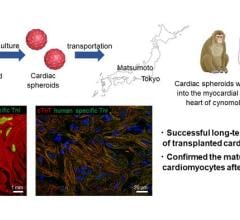
April 7, 2014 — A first-ever randomized head-to-head comparison of two devices commonly used to treat aortic stenosis finds balloon-expandable transcatheter valves (such as the Edwards Sapien) result in more successful procedures and relieve symptoms more frequently than self-expanding valves (e.g., Medtronic CoreValve), according to research presented at the American College of Cardiology’s (ACC) 63rd annual scientific session and published online in the Journal of the American Medical Association (JAMA).
Aortic stenosis is a condition in which a crucial valve in the heart ceases to function properly. The only cure is to replace the valve, either through open-heart surgery or through transcatheter aortic valve replacement (TAVR), a less invasive option in which a replacement valve is threaded into the heart through an artery in the patient’s leg.
“We know in general that the transcatheter approach works and that patients benefit from it,” said Mohamed Abdel-Wahab, M.D., head of the cardiac catheterization laboratory at Segeberger Kliniken, Bad Segeberg, Germany, and senior author of the study. “But we have two main types of valves available for this procedure, and until now, there was no conclusive data about their relative effectiveness. This study is important because it’s the first randomized comparison of these two technologies.”
The researchers tracked 241 TAVR procedures in five major hospitals in Germany. Half of the patients received a balloon-expandable valve, which is implanted by inflating a balloon that forces the valve into place. The other half received a self-expanding valve, which automatically expands when its sheath is removed.
The results show the balloon-expandable valve results in more successful procedures (the study’s primary endpoint) and improved patient symptoms (one of the study’s secondary endpoints). There was no significant difference between the groups for cardiovascular mortality at 30 days, bleeding and vascular complications or stroke. Successful procedures were those in which the valve was implanted in the correct position and provided a tight enough seal to prevent blood from leaking across the valve. Procedures using a balloon-expandable valve had a success rate of 95.9 percent as compared to 77.5 percent for the self-expanding valve.
Patients receiving the balloon-expandable valve also reported improvements in symptoms 30 days after the procedure at a rate of 94.3 percent compared to 86.7 percent in patients receiving a self-expanding valve. Common symptoms for aortic stenosis include breathlessness, chest pain, dizziness and palpitations. “Symptoms improved for a majority of patients overall, but the improvements were more common in the patients who received a balloon-expandable valve,” Abdel-Wahab said.
Abdel-Wahab speculated that the mechanics of the two valves may explain why the balloon-expandable option was generally more successful. The balloon-expandable valve may be better able to provide the amount of force needed to achieve a tight seal and prevent leakage. The average age of patients in the study was 80.
TAVR has been used routinely in Europe since 2007 and in the United States since 2011. In the absence of conclusive studies comparing the balloon-expandable and self-expanding valves, operators have typically selected valves based on availability and the operator’s own level of comfort with the technology.
“This is a very dynamic field,” Abdel-Wahab said. “We now have new valves coming out that will probably be even better, but we do not have enough data about them yet. These results can help to inform the design of future devices.”
The researchers will continue to monitor the patients for five years to compare long-term health outcomes in the two patient groups.
For more information: https://jama.jamanetwork.com/article.aspx?articleid=1854355


 May 02, 2024
May 02, 2024 








